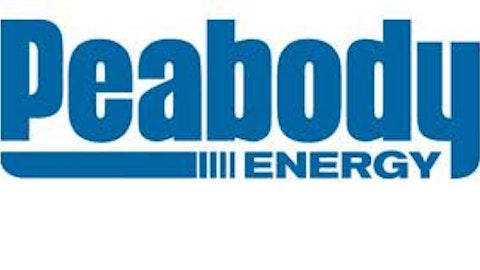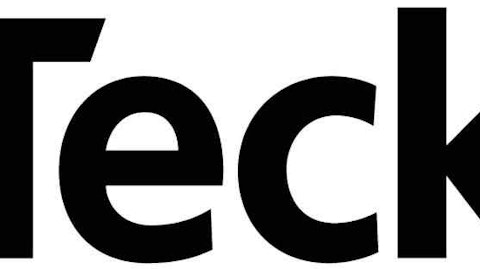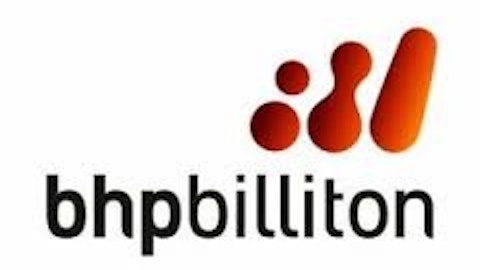In 2011, Walter Energy, Inc. (NYSE:WLT) paid $3.3 billion for Western Coal, materially increasing its focus on metallurgical coal right before that market started to falter. At the end of 2012, Walter took a $1.1 billion impairment charge against those assets. How does Walter Energy look after the write-down?
Bad timing
Walter Energy, Inc. (NYSE:WLT)’s CEO called the purchase of Western Coal “transformative,” citing the then surging demand for met coal. The company paid an over 50% premium. And the purchase did materially change the company, particularly its balance sheet.

Debt increased from $170 million in 2010 to $2.3 billion in 2011. Shareholders’ equity increased from $600 million to $2.1 billion. Although hindsight is always 20/20, it is clear today that Walter Energy, Inc. (NYSE:WLT)’s purchase came at the top of the met market. At the end of 2011, the company was averaging about $185 a tonne for its coal. By the end of 2012, it was getting about $150 per tonne.
That steep drop led to an asset impairment charge largely related to the acquired assets of $1.1 billion. That non-cash charge came out of shareholders’ equity and amounted to about a third of the purchase price. The debt overhang from the purchase, however, didn’t go away and now makes up around 75% of the company’s capital structure. The shares, meanwhile, have fallen over 90% from 2011.
Is Wall Street now properly pricing Walter Energy, Inc. (NYSE:WLT)? The company’s realized coal prices in the second quarter were about the same as they started the year. That’s a good sign. However, sales prices were notably lower than the year ago period. And the company lost money. So, unless coal prices head higher quickly, the rest of the year is likely to be just as bad as the first half.
That’s particularly true since about half of Walter Energy, Inc. (NYSE:WLT)’s coal goes to Europe, which is only slowly coming back from a recession. And demand from Asia, where the company sends about a third of its coal, isn’t picking up quickly, either. In fact, the financial situation is so weak that the company was forced to amend a credit facility and cut its dividend down to a penny a share.
Although Walter shares might rally quickly if the met market turns higher, if it doesn’t the company will remain a troubled industry participant. There are better options available.
Not the only one
To be fair, Walter isn’t the only company that made overpriced purchases when met coal was on the upswing. Peabody Energy Corporation (NYSE:BTU) and BHP Billiton plc (ADR) (NYSE:BHP) both expanded in Australia to feed the growing demand from China.
Peabody Energy Corporation (NYSE:BTU), which has significant operations in both the United States and Australia, wrote down its Australian mines by about $800 million because of low met coal prices. However, the company noted that the writedown only represented about 10% of the investments the company had made in the country over the previous decade. That’s a far cry from Walter, which wrote down a third of a purchase in about a year.
Peabody Energy Corporation (NYSE:BTU) is expecting earnings to be between a loss of $0.16 a share and a profit of $0.09 a share in the third quarter. Without an uptick in coal prices, the fourth quarter probably won’t offer any more certainty. But even in a difficult market Peabody is about break even or better. Debt makes up a more reasonable 50% or so of the company’s capital structure and there hasn’t been a dividend cut. Investors seeking a coal stock with international exposure should stick to Peabody Energy Corporation (NYSE:BTU).
Mining giant BHP Billiton plc (ADR) (NYSE:BHP), meanwhile, provides even more diversification. It has been focusing on iron ore, petroleum, copper, and coal, giving it the ability to shift investment dollars to the areas that have the best growth prospects, propping up the weakest areas with the strongest.
For example, while iron ore and coal are currently weak, oil prices remain strong. Because of this diversification the company has been profitable for the past decade. As an example, the company wrote off nearly $3.5 billion related to its natural gas and nickel assets in fiscal 2012, a year in which it still earned nearly $3.00 a share. Although the company reported weak fiscal 2013 results, BHP Billiton plc (ADR) (NYSE:BHP) might be the best option for risk averse investors looking for exposure to coal.
And, despite the weak markets and notable earnings drop between 2012 and 2013, the company was soundly in the black. When coal picks up it will likely be accompanied by an uptick in iron ore, which will provide a double boost to earnings.
All in
Walter Energy went “all in” at the wrong time and shareholders have paid the price. The shares are still too risky. Peabody Energy Corporation (NYSE:BTU), which also wrote down coal assets, is a better pure-play choice. For even more risk averse investors, however, BHP Billiton plc (ADR) (NYSE:BHP) is probably the best option because of its diversified portfolio and massive scale.
The article Is This Miner a Buy After Coal Acquisition Writedown? originally appeared on Fool.com and is written by Reuben Brewer.
Reuben Brewer has no position in any stocks mentioned. The Motley Fool has no position in any of the stocks mentioned.
Copyright © 1995 – 2013 The Motley Fool, LLC. All rights reserved. The Motley Fool has a disclosure policy.




